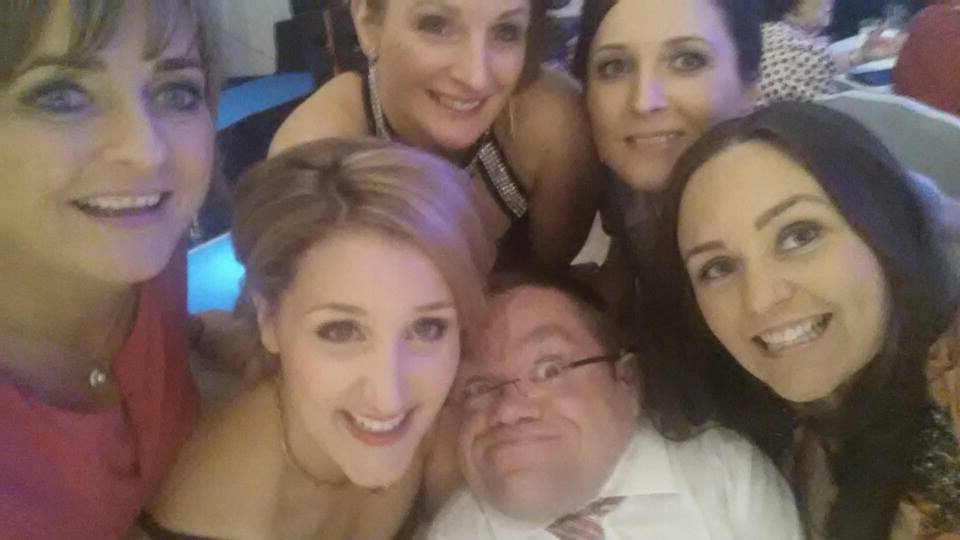Has Northern Ireland Gone Selfie Mad In Employment?
We live in the age of the selfie. US presidents, Hollywood stars, global pop icons, and even Belfast lord mayors have been getting in on the act, with their smartphone self-portraits from high-profile events.
But a growing proportion of the population has quietly been doing a selfie of a different kind, often aided by mobile technology, but without the pout.
For as the number of social media selfies has been rising, so has the number of selfies in the labour market. An increasing number of us are employing ourselves, with the trend evident in the UK, the Republic and Northern Ireland.
Of the three economies, however, the rise in self-employment in the Republic has been the least significant (perhaps not surprising given the dominance of the construction industry within self-employment). The number of self employed in the Roi increased by five per cent over the last year, but is still over 11 per cent below its peak over six years ago.
The collapse of the construction industry and the house building sector in particular largely explains why the Republic’s increase in self-employment has been lagging behind Britain and Northern Ireland.
UK self-employment has increased at double the rate of the Roi over the last year (not only is it above its pre-downturn levels, it has never been higher).
Of the 722,000 increase in UK employment between the first quarters of last year and this year, more than half of this increase (375,000) was due to self-employment. This surge is the primary reason why the scale of the UK’s labour market recovery has taken policy makers, including the Bank of england, by surprise. In turn, the large increase in self-employment has led to a much faster fall in the UK unemployment rate to just 6.6 per cent. This is also one of the key reasons why financial markets have been quick to price in earlier increases in the Bank of England’s bank rate than was previously the case.
So how does Northern Ireland compare?
Of the three economies, Northern Ireland has experienced the sharpest rise in self-employment by quite some margin. Almost one in seven of all people engaged in work in some shape or form class themselves as self-employed. Self-employment in Northern Ireland increased by one fifth (or 21,000) in just 12 months and is back above pre-recession levels. Furthermore, at 125,000 in quarter one of 2014, the north’s current self-employment levels remains within 2 per cent (2,000) of its record high. Meanwhile the number of people in employment (either as employees, self-employment or on government programmes) increased by 18,000 between Q1 2013 and Q1 2014. Therefore all of this increase, as opposed to just over 50 per cent for the UK, was due to self-employment. So what is behind the recent rise in Northern Ireland’s surge in self-employment? is the region rediscovering its entrepreneurial flair that was evident during the first half of the 20th century? Are individuals responding to positive marketing to start a business and ‘Go For it’. Or are people falling into self-employment because of necessity rather than choice and the lack of alternative employment? While the surge in UK self-employment has not exhibited any unique gender differences, within Northern Ireland the rise in self-employment has been more marked with females than males. The former category has increased by 45 per cent over the past year, almost four times the rate of males (12 per cent). The latter’s gains are concentrated in the male-dominated sectors such as agriculture and construction. A third of Northern Ireland’s increase in self-employment (7,000) was due to the construction sector which accounts for 22 per cent of total self-employment. Meanwhile female self-employment, which has never been higher, is more prevalent within the services industries. Outside of the increase in Northern Ireland’s female self-employed, there are other notable trends linked to age and qualifications that differ relative to the UK. Traditionally the 30-to-44 years age bracket is the most entrepreneurial category. Indeed, back at the start of 2007, 45 per cent of Northern Ireland’s self-employed fell into this age bracket, with a further 30 per cent falling within the 45-to-59 years of age cohort.
Fast forward seven years and the number of self-employed falling within the 30-44 years of age group, the most ‘entrepreneurial category’ has fallen by almost 20 per cent. Conversely the self-employed within the 45-59 years of age bracket has increased by 41 per cent and now accounts for the most number of self-employees – 40 per cent of the total.
The 30-to-44 years of age category has seen its share of the self-employed slump by 10 percentage points.
This ageing of the self-employed is not unique to Northern Ireland. However, the changes in Northern Ireland are more extreme, in terms of the changes in the relative shares of these two age-categories, than has occurred within the UK.
Given the shifting age-profile in the self-employed, it would appear that the recent rise in self-employment does not represent a renaissance in entrepreneurial spirit. instead it probably indicates that people have been going into self-employment as a result of need rather than desire – for instance, it could be people setting up on their own following redundancy, or people taking early retirement but working for themselves on a part-time basis.
Also it’s not clear in terms of the surge in female self-employment as to precisely what they are doing. There isn’t data available to tell us for sure, so this is an important area that policy-makers may want to look at in more details to fully understand what is happening in the labour market.
But overall, it is clear the selfie has very much come to prominence. And this is not just a short-term labour-market trend, but a wider societal phenomenon.
When it comes to skills, pensions, and personal development, providing for yourself is more and more the necessity. Selfies are here to stay.
Source: irishnews.com




